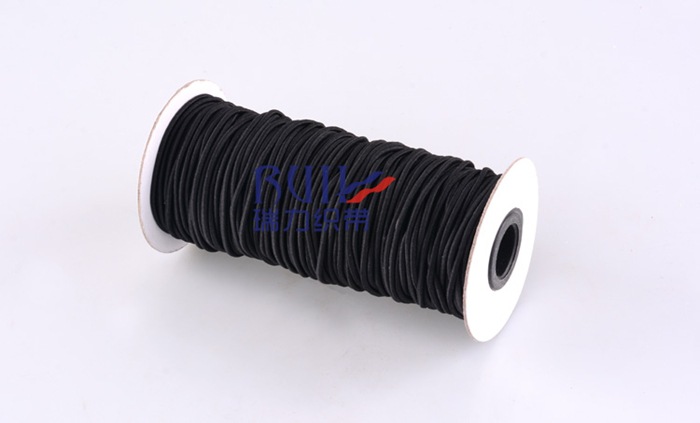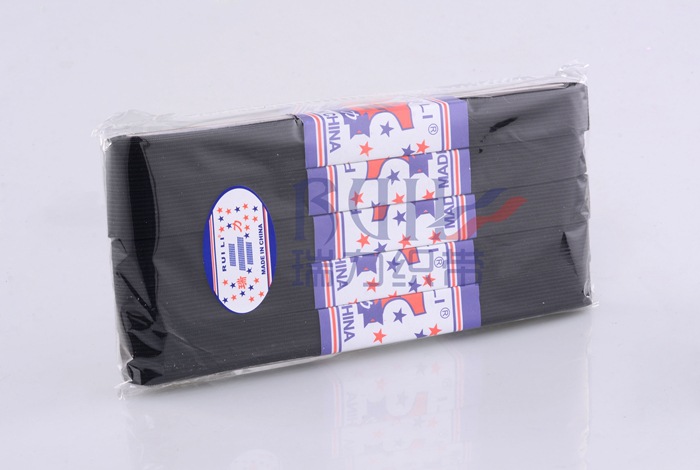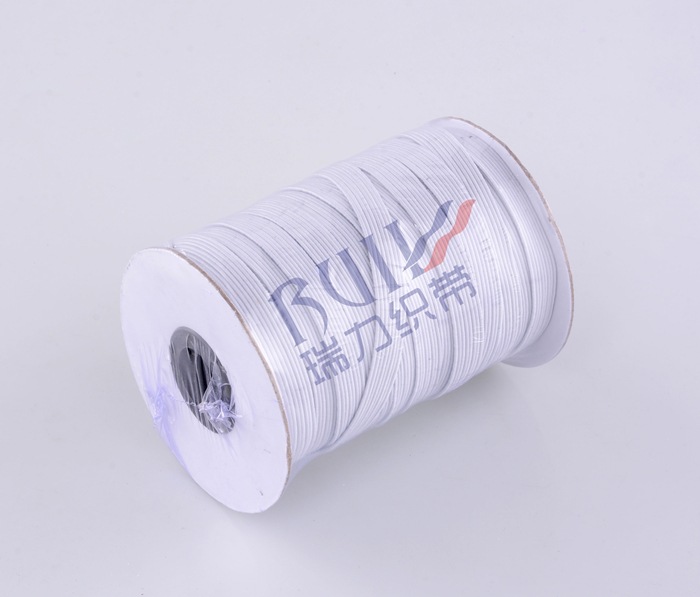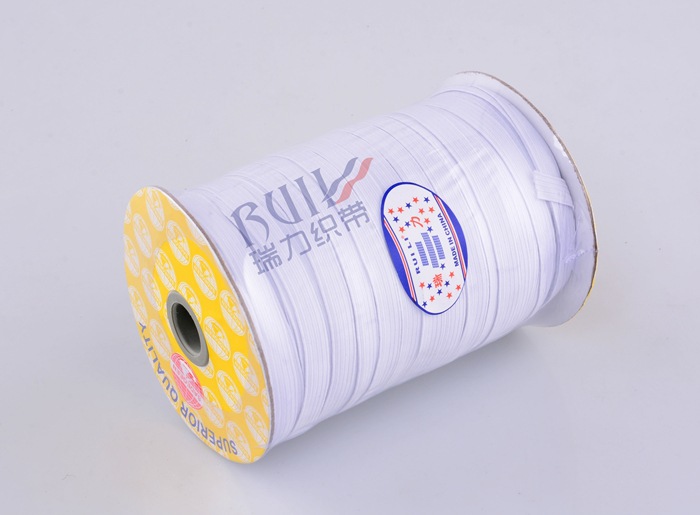X Email Mobile
| Number | Unit-price | Total | |||
| I want to buy: | × | 13.5 | = | 0 |
A new item has been added to your Shopping Cart. You now have items in your Shopping Cart.
Ruili Elastic 13yr.
Main Products:Elastic,webbing,strappy,gold and silver ribbon,shoelace,luggage belt,gift belt,carry-on
Contacts:Lin ZhifeiChat
Mobile:86-15957955914
E-mail: WeChat:15325971228
Address:41228 , 4 Street, 3 F, 81 Gate, International Trade Mart (District 4).
Address:No. 16, Huaxin Road, Qianchi Industrial Zone, Ruian City, Wenzhou, Zhejiang
Related items
          |
| Product Overview |
| Made from various yarns, narrow-width fabrics or tubular fabrics are produced. There are numerous types of woven products, which are widely used in various industries such as clothing, footwear, luggage, industry, agriculture, transportation, etc. In the 1930s, woven belts were all produced by handcraft workshops, using cotton and linen as raw materials. After the founding of New China, the raw materials for woven belts gradually developed to include nylon, polyvinyl alcohol, polyester, polypropylene, spandex, and viscose, forming three major categories of technology: machine weaving, braiding, and knitting. The fabric structures include plain weave, twill, satin weave, jacquard, double-layer, multi-layer, tubular, and combined structures. Continuous staining Continuous warp dyeing has become the most popular and efficient weaving belt dyeing process. So, what should be paid attention to when dyeing weaving belts? The main points to note when dyeing continuous woven belts mainly include: 1. Weaving raw material factors: Firstly, it is important to note whether the yarn used is from the same batch, as the amount of "oil" in different batches can affect the dyeing process and cause color variations if mixed; Secondly, whether the raw material has undergone pre-treatment, yarn that has been refined has excellent dyeing results, as the "oil" on the yarn is removed, allowing the dye to directly contact the fibers for dyeing, without any protection. 2. Dyeing tank (or known as rolling machine, dyeing vat, dyeing machine) The pressure of the pneumatic cylinders at both ends of the rolling machine is uniform. The rolling machine of the continuous hot melt dyeing machine generally uses pneumatic pressure, and there is a pneumatic cylinder on each side of the rolling machine. After the rolling machine has been running for a period of time, due to the effect of water in the compressed air, the pressure at both ends of the cylinder will produce differences, leading to uneven liquid rate of the web, causing color differences between the edges and the center. In addition, the rolling machine's rolling machine at both ends of the pressure, producing certain deflection, causing inconsistent rolling residual rate between the edges and the center, will also cause color differences between the left, the center and the right. 3. The pressure of the dyeing rollers and their centricity and hardness factors have an impact on production. To reduce the impact of roller pressure on the color difference of the left, middle, and right sides, the roller pressure in weaving belt dyeing should generally be controlled at 0. 2MPa or above. Due to the wear of the rollers during production, it is required to calibrate and repair the rollers regularly to avoid inconsistencies in the rolling residue caused by different roller centricity, which can lead to color variations. Rollers with different hardnesses have different rolling residue rates. Too hard can lead to insufficient dye absorption, while too soft can lead to excessive rolling residue rates, causing excessive dye migration and color variations. The appropriate hardness of the rollers should be determined based on the belt. 4. The Impact of Infrared Pre-drying Temperature on Fabric Ribbons After the pre-treatment and dipping dyeing process of polyester ribbons, they generally undergo infrared (line) pre-drying treatment before entering the color development box to prevent dye swimming phenomena during the drying process, avoid color bleed and color difference between front and back sides. When the infrared pre-drying temperature is lower than 80℃, the color difference between the front and back sides of the ribbon is relatively large, making it difficult to meet the customer's requirements. When the infrared pre-drying temperature reaches 100℃ or above, the color difference phenomenon of the ribbon front and back sides is significantly improved. This is because when the pre-drying temperature reaches 100℃ or above, the water in the ribbon is essentially evaporated, greatly reducing the possibility of dye swimming. Considering the practical production of dyeing and energy consumption, the infrared pre-drying temperature is controlled at 100℃-150℃ is more suitable. In production, the infrared pre-drying temperature is generally determined according to the thickness and liquid rate of the raw ribbon variety. The higher the liquid rate of the raw ribbon, the higher the infrared pre-drying temperature. In actual production, it cannot solely rely on the infrared pre-drying temperature to control the color difference between the front and back sides of the ribbon dyeing, especially for sensitive color numbers such as coffee, dark green, etc., it must be combined with the use of anti-swimming agents and other aids to achieve good dyeing effects. 5. The influence of curing oven color fixation temperature on color development Curing color development is an important part of continuous thermal dissolution dyeing. The uniformity of the curing oven color fixation temperature plays a key role in controlling the left, middle, and right color differences of the fabric belt. After polyester fabric belts are pre-cured with infrared rays and then enter the curing oven, it is necessary to ensure that the temperature is consistent, otherwise, significant color differences will occur. Experimental results show that if the temperature differences in the left, middle, and right of the curing oven exceed 2℃, the color of the fabric belt will change significantly. Therefore, it is necessary to ensure that the temperature of the curing oven is uniform during dyeing production. 6. The Impact of Moisture Content on the Color Difference of the Left, Middle, and Right Sides of the Fabric Ribbon: Polyester filaments are often treated with a certain amount of oil during the spinning process, so it is necessary to undergo de-oiling treatment before dyeing. After the fabric ribbon is treated before dyeing, it is generally dried. The uneven surface temperature of the drying drum can cause a difference in moisture content of the ribbon, which can seriously cause color differences on the left, middle, and right sides of the ribbon. In the dyeing production process, to avoid color differences caused by different moisture content of the ribbon, it is necessary to ensure that the ribbon is thoroughly dried before immersing and rolling the dyeing liquid, and to regularly maintain the drying drum. 7. Other factors contributing to color differences in the production management of polyester ribbons are as follows: the main factors affecting the left, middle, and right color differences in dyed polyester ribbons. (1) The quality of the semi-finished fabric, such as the weave structure, warp and weft density, warp tension, and thickness, among other factors, can all lead to color differences in dyeing. The differences in production efficiency between weaving machines and dyeing machines can cause color differences when different weaving machines produce the same fabric on the same dyeing machine, or even when different batches of fabric are dyed on the same machine. In order to reduce the impact of fabric quality differences on color differences in dyeing, it is necessary for weaving and dyeing to coordinate and coordinate the production plan, and at the same time, to manage the inventory of the fabric well, and try to achieve "first in first out". (2) The baking oven of the machine management needs to be regularly inspected and maintained to ensure the normal operation of the heating equipment (such as heating tubes, burners, etc.), normal temperature rise and temperature control. In the actual production process, it is also necessary to maintain the smoothness of the air channel in the box and the cleanliness of the filter mesh. The adjustment of the belt tension of the dyeing machine is very important. Before entering the dyeing trough, the belt tension should be basically consistent to ensure the consistency of the belt liquid rate, thereby ensuring the consistency of the color. It is also important to control the tension exerted on the fabric belt by the dyeing machine. Since the fabric belt dyeing machine generally adopts a frequency conversion control method to regulate the tension of the entire dyeing machine, it is necessary to ensure the normal of the frequency conversion control signal at each process point, and to repair the defective devices in time. (3) The compatibility of dyeing agents with dyeing agents has a significant impact on the color difference between the front and back sides of the fabric belt. When producing the same color number with different formulations, the color difference between the front and back sides of the fabric belt is significant. Generally, it is best to choose the same or similar dispersive dyes with the same sublimation fastness and type (S, SE, E type) for compatibility, which leads to better dyeing effects. In addition, the auxiliary use of agents such as anti-pooling agents, penetration agents, and even dyeing agents has a certain role in controlling the color difference of dyeing, but it needs to be used reasonably. Identify the woven tape Take several strands of the warp and weft yarns from the two unknown types of fabric, and burn them separately with a lighter. During the burning process, observe some physical phenomena to determine the raw materials of the warp and weft yarns. When burning, observe the flame, the melting process, the odor emitted, and the condition of the ash after burning. Here are the burning physical performance parameters of the two kinds of fabric materials, for your reference: Nylon ribbon: Melts and shrinks when near the flame, emits flame, drops and bubbles, does not continue to burn directly, has a similar flavor to celery, is hard, round, light, brown to gray, bead-like. Polyester ribbon: Melts and shrinks when touched with flame, emits flame, drops and bubbles, can continue to burn, with a small amount of smoke, very weak sweet taste, hard and round, black or light brown. Cotton fiber and linen fiber Cotton and linen fibers both ignite quickly when near a flame, with rapid combustion, producing yellow flames and blue smoke. The difference in the odor released during combustion and the ash after burning is that cotton emits a paper-like odor, while linen emits a smell of plant ash. After burning, cotton leaves a very small amount of powdery ash that is black or gray, while linen produces a small amount of grayish white powdery ash. Nylon and Polyester Nylon (polyamide fiber), also known as Kevlar, curls and melts into a white gel when exposed to flame. It melts, burns, and bubbles when burned, with no flame. It is difficult to continue burning after leaving the flame, emitting a celery-like odor. The light brown melted material is not easily crushed when cooled. Polyester, also known as polyester fiber, is easily ignitable. It melts and shrinks when near the flame, and burns with yellow flame, emitting a pleasant odor. After burning, the ash is a dark brown hard lump that can be crushed with a finger. Acrylic and Polypropylene (PP) Acrylic fiber, also known as polyacrylonitrile fiber, softens and melts when exposed to fire, emits black smoke when burning, and the flame is white. It quickly burns away from the flame, emitting a pungent, sour odor reminiscent of burned meat. After burning, the ash is irregular black hard lumps that crumble easily when hand-pressed. Polypropylene fiber, also known as polypropylene fiber, melts and shrinks when exposed to flame, is flammable. It burns slowly when removed from the flame, emitting black smoke. The flame at the top is yellow, while the bottom is blue, and it emits a smell of petroleum. After burning, the ash is hard, round, light yellowish brown, and easily crushed when rubbed between fingers. Vinylon and Chlorofiber The scientific name of Velour is polyvinyl alcohol formaldehyde fiber, which is not easily ignited. When it is near the flame, it melts and shrinks. When it burns, there is a small flame at the top. When all the fibers melt into a gel-like flame, the flame becomes larger, and there is a strong black smoke, which emits a bitter odor. After burning, it leaves behind small black bead-like particles that can be crushed with a finger. Chlorofibre, also known as polyvinyl chloride fiber, is not easily combustible and will extinguish when removed from the flame. The flame is yellow, with greenish-white smoke at the bottom, emitting a pungent, sour odor. After burning, the ash is a dark brown, irregular, hard mass that is difficult to crush with the fingers. Spandex and Fluorocarbon Spandex, also known as polyurethane fiber, melts and burns when near fire, with a blue flame. It continues to melt and burn after leaving the fire, emitting a special irritating odor. After burning, the ash is soft, fluffy, and dark gray. Fluorocarbon fiber, also known as polytetrafluoroethylene fiber, is called fluorite fiber by the ISO organization. It only melts when near the flame, is difficult to ignite, does not burn, and the edge flame is carbonized blue-green, melts and decomposes, the gas is toxic, and the melted material is a hard, round, black bead. Fluorocarbon fiber is often used in the textile industry to manufacture high-performance sewing threads. Identifying fibers using the burning method is simple and easy to do, but it is not easy to determine mixed fabrics. It is necessary to take a yarn from each direction (i.e., the straight and horizontal directions) and burn them separately for identification. fabric material Polyester (PET) 1. High-strength wear resistance. 2、 Poor absorbency, fixed rehydration rate of 0.4% (20°C, relative humidity 65%, 100g polyester absorbs 0.4g). 3. Easy to generate static electricity and easily pilling. 4. Acid-resistant but not alkali-resistant. Note: A certain concentration of alkali can destroy the surface of polyester at a certain temperature, making the fabric feel soft. 5. Good corrosion resistance and light resistance. 6. Fabric made of polyester fiber is less prone to creasing, has good size stability, and is easy to wash and dry quickly. Polyester Filament 1. FDY (Filament Dyed Yarn): The single fiber is smooth and uniform, with bright, bright, semi-bright, and matte finishes, with decreasing brightness. 2. DTY (Drawn Textured Yarn): Single fiber bending, low stretch, fluffy. 3. DTY Nylon Filament (Low-Stretch Nylon Filament): Has stage-like network points, which increases the bundle ability between fibers (classified into non-network, light network, medium network, and heavy network, with the heavy network suitable for unbleached yarn). In general, FDY and DTY must be sized or twisted before being used as warp yarn. Sizing: Increases the strength of the silk thread; the cohesiveness between fibers; makes the surface of the fibers smooth, facilitating weaving. 加捻:增加纤维之间的抱合力;使织物具有绉效果。 Twist: (T) The number of twists per unit length of filament. 0-10 T/CM Weak Twist 10-20 T/CM Medium Twist 20 T/CM Strong Twist 4. POY (Pulse Oriented Yarn): Elastic and non-reversible, cannot be used alone as warp or weft, must be combined with other yarns, can stretch by 1.6 times, POY yarn is the semi-finished product of low-elasticity network yarn. Typical fabrics: washed velvet. 5. ATY (Air Textured Yarn): The surface is not smooth, with a loop pattern. Typical fabrics: Tartan velvet. Polyester short fiber: multiple short fibers are twisted along the axis. 7. Polyester Bamboo Yarn: Made by twisting long-strand and low-elastic yarns, the elasticity of the yarn is low. 8、High-elastic silk: High stretch, high fluffiness. 9. Polyester cationic yarn: can produce a two-color effect with ordinary polyester yarn, easy to dye, bright colors. Nylon (PA) or Nylon (NYLON) 1. The strength is excellent, even exceeding that of steel wires of the same fineness. 2. Excellent wear resistance, surpassing other textile fibers, suitable for sportswear, socks, parachutes, and ropes. 3. Poor absorbency, specified rehydration rate is 4%, prone to static electricity, pilling, and balling. 4. Alkali-resistant but acid-sensitive, 37.5% hydrochloric acid can dissolve it. 5. Good corrosion resistance, poor water resistance, poor light and heat resistance, and the strength decreases over time with yellowing. 6. Clothing made of nylon is prone to deformation and wrinkle. Spinning form: Mainly FDY, ATY. PU (Polyurethane) Characteristics: Extensible by 500-800%, low strength, durable against perspiration, seawater, acid, and alkali, good performance, cannot be used alone as warp or weft threads, must be covered with other yarns. The main forms of spandex covering are: open covering (where spandex is clearly visible); and machine covering (where spandex is wrapped inside). Island-type composite filament: It is composed of island filament and high-contraction filament blended and combined into a network. High-shrink yarn: Boiling water shrinkage rate reaches 35% (so the rate of suede velvet is very large). Island Silk: Ultra-fine fiber, single fiber can reach 0.138 (producing suede velvet feel). 粘胶(R)粘胶纤维: 1. Chemical composition is the same as cotton, and the performance is close to cotton. 2. Better than cotton in moisture absorption, easy to dye, bright colors, good color fastness. 3. Low wet strength, 40-60% of dry strength, poor elasticity and wear resistance in wet state, adhesive fabric is not resistant to water washing, poor size stability. Spinning form: viscose filament -- artificial silk -- rayon. Viscose rayon -- artificial cotton -- human cotton Acetate fiber 1. Official rewetting rate of 6%, semi-hydrophobic fibers. 2. The strength is not good, with a silk-like luster and a smooth and cool touch. 3. Soft, easily deformed, poor wear resistance. 4. Compared with viscose, acetate fiber has lower strength, poor moisture absorption, poor dyeing properties, and superior hand feel, elasticity, luster, and insulation to viscose fiber. Metal filament Stainless steel wire, single wire specification 0.035mm-0.28mm Function: Flash, Conductivity, Fire-retardant, Radiation-proof. |
| About Quality |

|
| Logistics/Courier Instructions |
| Before shopping: If you have any questions, feel free to consult at any time. We will be patient to answer your questions. 2. About the price of the product: The prices on the Internet are for reference only. Please contact the seller for the specific product price. III. Regarding Logistics: The specific logistics methods and costs will be determined by the seller and the buyer through consultation. |

|
| About Us |
| Ruian RuiLi Tape Factory specializes in the production of elastic bands and textile products for clothing. Since its establishment, the company has maintained extensive cooperation with domestic colleges, universities, and research institutions. It is a research-oriented factory that integrates scientific research, production, management, and technical services. Our factory continuously absorbs and digest foreign advanced technology, using our full technology and brand-new equipment to produce high-quality and high-grade textile products. We adhere to the business philosophy of "seeking truth, being practical, efficient, and dedicated," and have a strict quality assurance system. In the new century, we will follow the purpose of "innovation, progress, rigor, and pragmatism" and the enterprise spirit of "pursuing excellence in quality and spirit," to create the best products and services. We will add wings to your enterprise's takeoff. We carefully produce each product with the best quality, efficiency, and a professional attitude. Our factory will integrate a professional attitude, spirit, and approach into the details of our service, making our products and services perfect on both the inside and the outside. Our reputation, quality, and efficient service have always been our pursuit. We welcome new and old customers to visit. |
 |
| Contact us |
| Contact: Mr. Chi Shengjie Telephone: 86 0577 65207667 Fax: 86 0577 65221006 Address: 16 Hua New Road, Qianchi Industrial Zone, Tangxia Town, Ruian City, Zhejiang Province, China Postal Code: 325000 Company homepage: http://kkksssmmm.1688.com |
Update time:
TOP